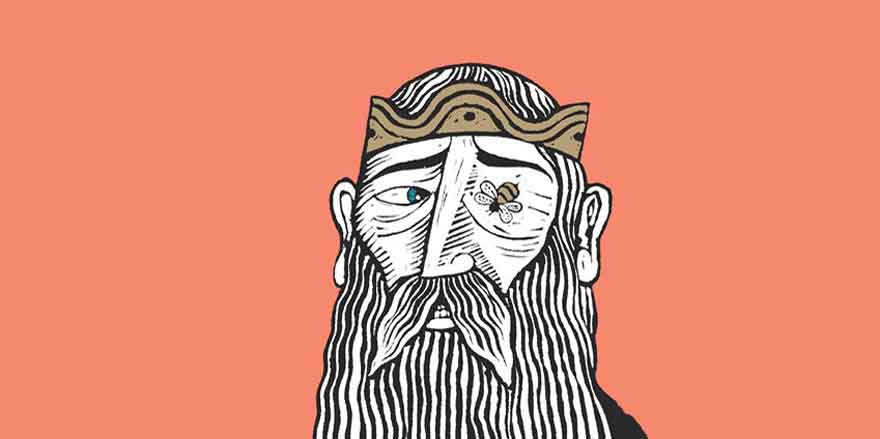
Inside 'A history of Ireland in 100 words': Caoch
03 March 2020Why can't the one-eyed man be king? Find out in today's entry on blindness, blemishing and being ‘blind drunk’!
To celebrate Seachtain na Gaeilge we're letting you take a peek inside our book A history of Ireland in 100 words. Today's entry is Caoch.
An animal or person who is blind or partially blind is described as caoch in Modern Irish. In its earliest usage, however, the word referred specifically to being blind in one eye. In this sense, it is found in the name of Ulster king, Congal Caoch, who died in 637. Congal was supposedly so-named after he was stung by a bee in one eye and lost the sight in it. According to the medieval Irish ideology of kingship, a king with a physical blemish could not be tolerated and, as a result, Congal was banished from the kingship of Tara.
Although caoch originally meant ‘blind in one eye’, at an early stage it came to mean simply ‘blind’ and the term lethchaoch emerged to express the idea of being, literally, ‘half-blind’. Whereas Congal is deemed to be caoch after being stung in one eye, an early legal text describes Cormac son of Art as lethchaoch after he was struck in the eye by a spear.
As a term for various forms of figurative blindness, caoch survives in a number of Modern Irish phrases. To turn a blind eye to something is expressed by bheith caoch ar rud (literally, ‘to be blind to something’), and to blindside someone can be teacht taobh na súile caoiche ar dhuine (‘to come on the side of someone’s blind eye’). Extreme drunkenness is frequently described as a blinding experience, as in the phrase bhí sé caoch ólta (‘he was blind drunk’), and if you are completely beaten by someone, you can be said to be buailte caoch (‘beaten blind’).
Objects that have some obscured or defective element can also be described using caoch. For example, cnó caoch is a nut that consists only of an empty shell. In a text concerning an encounter between the Devil and St Moling found in the twelfth-century manuscript the Book of Leinster, the Devil tries to obtain a blessing from the saint before finally acknowledging that he is irredeemable. The Devil leaves, dejected, uttering a poem in which he compares anyone who does not do the will of God to a blind nut which has no nutriment (is cnú chaech … cách na déni toil in Rig). Blind nuts were said also to be amongst the bizarre foods enjoyed by the Ulster poet, Amairgen, who as a boy could not speak until he was fourteen and consumed a diet of ‘boiled curds, sea salt, red blackberries, unripe berries, burnt ears of grain, stalks of garlic, and blind nuts’.
This use of caoch to refer to something that does not function as it should continues today in expressions such as cartús caoch ‘a blank cartridge’, clós caoch ‘a blind alley’ and tobar caoch ‘a dried-up well’. A walled-up door is known as doras caoch, which contrasts nicely with súil droichid, literally ‘the eye of a bridge’, that is, an arch.
A history of Ireland in 100 words is a book, a banner campaign and an exhibition. Find our more at www.ria.ie/100words.



